What is Planetary Hours, part 1.
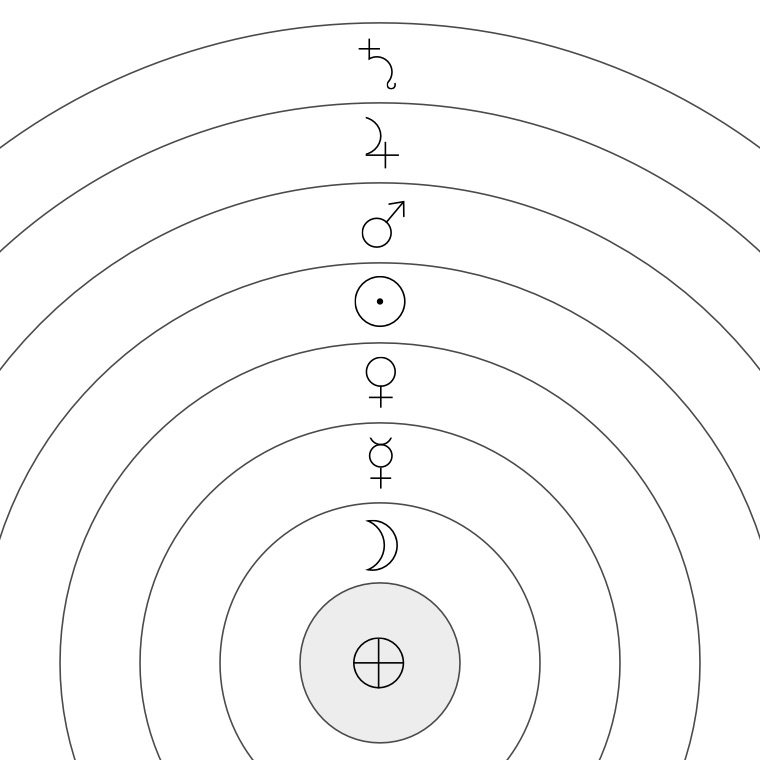
What is planetary hours and how can one reconstruct them knowing some basic numerology and common sense.
Planetary Hours is an extremely ancient knowledge that is still useful today. Suppose we knew nothing about that division of time, how could we “reinvent” planetary hours?
Starting with Numerology
Before forms, shapes and images existed, there were numbers. Numbers is the foundation on which all the rest is built. It makes sense to begin with looking at just a few first the most fundamental numbers: 0, 1, 2, 3 and 4.
Zero 0 is a Universal Void, nothing exists and everything is dissolved. But as we live in the dualism of creation, further numbers act in a much more direct way.
| Number | Quality | Interpretation |
|---|---|---|
| 1 | Unity | All is One |
| 2 | Duality | Light and Darkness |
| 3 | Fire element | Creative Spirit |
| 4 | Matter | The playground for Fire |
From the geometrical standpoint, 1 point defines a dot, 2 points define a line, 3 points define a plane, 4 points define the simplest possible three-dimensional object, a pyramid which is not surprisingly is made of four triangles. The Earth as well as the physical aspect of the universe is presented by number 4.
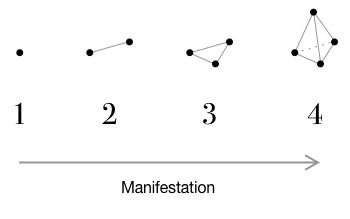
Further combining some of those fundamental numbers allows us to define basic units of time, or rather cycles:
| Operation | Cycle |
|---|---|
| 3 + 4 = 7 | 7 days of creative cycle |
| 3 * 4 = 12 | 12 hours of light or darkness (day or night) |
| 2 * 12 = 24 | 24 hours of the full day/night cycle |
Relationship between the cycle of creation (7 days of creation) and the cycle of light and darkness (24 hours per day) can be revealed using elementary algebra, the math equations look like so:

As one can see, the 24 hour cycle is a metaphor for an interplay between the duality of light & darkness (symbolised by the number 2) and creative Spirit of Fire (symbolised by the number 3).
The seven classical planets and seven planetary spheres
The seven classical planets — the Sun, the Moon, Mercury, Venus, Mars, Jupiter and Saturn — illuminate our skies and all visible to the naked human eye.
The seven planets traditionally correspond to the sequence of planetary spheres. To “reinvent” the planetary spheres, simply arrange the planets by their speed as seen from the Earth. For example we can use planets’ orbital periods, that would give us a relatively close approximation:
| Planet | Average orbital period |
|---|---|
| Moon | 27 days |
| Mercury | 88 days |
| Venus | 225 days |
| Sun | 365 days |
| Mars | 687 days |
| Jupiter | 4,333 days |
| Saturn | 10,759 days |
The simple rule for the order of planetary spheres:
A faster moving planet is “closer” to the Earth in the order of planetary spheres.
Possibly there are other reasons why the planetary spheres were assigned this order. But for the current exercise the reasoning above gives us a decent explanation acceptable by the modern mind.
So here we go, planetary spheres illustrated below:
Saturn ➝ Jupiter ➝ Mars ➝ Sun ➝ Venus ➝ Mercury ➝ Moon
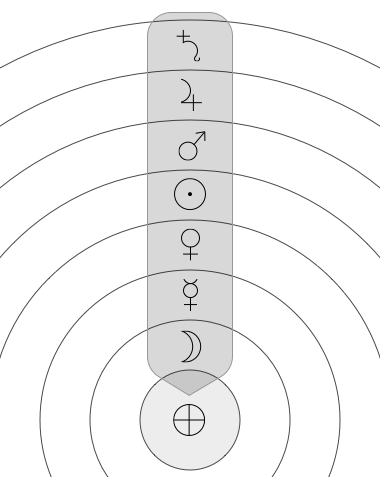
Meaning of the planetary spheres
The seven planetary spheres symbolise the birth process within the creation and the phases of an individual incarnation of a soul on the Earth — as well as the movement back, from the earthly plane to the celestial realms.
One can see them as seven phases of travel, or seven units of time. And so we arrive to the idea that time itself is divided and “coloured” by each individual sphere.
An interesting observation — regardless of the direction of travel, the Sun stays central as the number four, highlighting it as the source and symbol of all creative power.
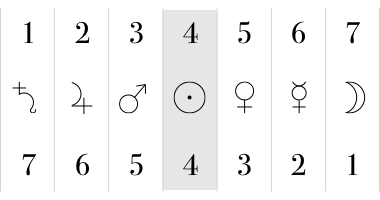
And there is even more! Having the Sun as the centre of symmetry of planetary spheres highlights three major dialectical pairs of planets: Mars and Venus, Jupiter and Mercury, Saturn and Moon — symmetrically ordered to perfectly mirror each other.
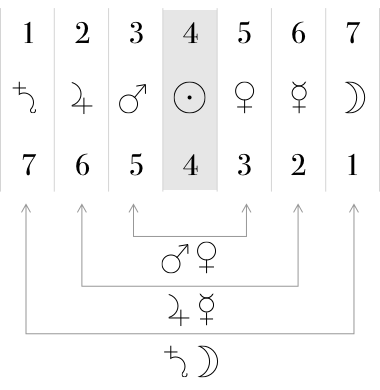
The order of the planetary spheres does make a lot of sense indeed. Having established this order, we can proceed to the topic of divisions of time.
In the next part…
The next part will talk about the days of the week and how they had been derived from the sequence of planetary hours. Keep reading…

How to calculate planetary hours using Time Nomad
Learn how to use planetary hours calculator, schedule a planetary hours alarm and discover other tools to work with planetary days of the week.